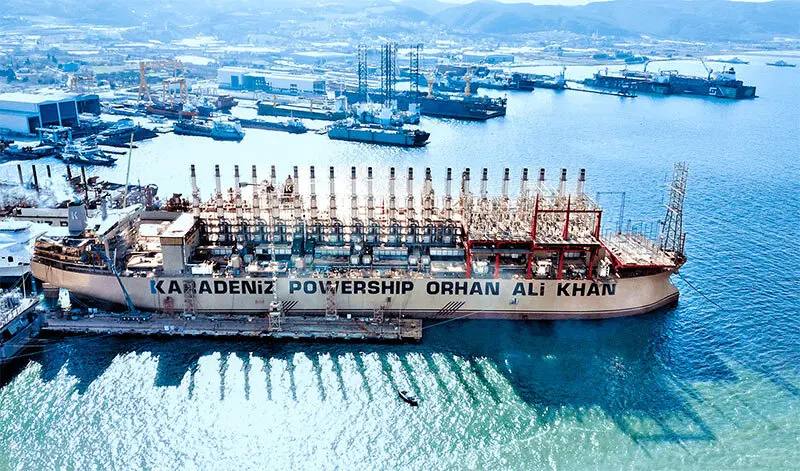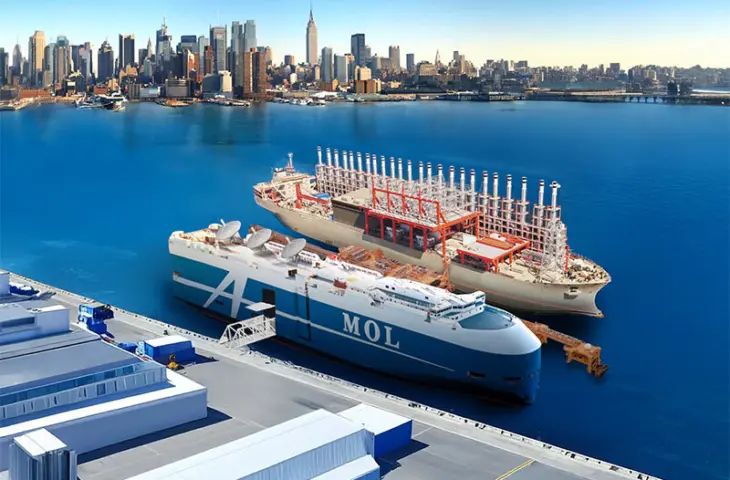Japanese shipping company MOL believes the future of data centers lies at sea. The company is starting the development of a floating data center.
Japanese shipping company Mitsui O.S.K. Lines (MOL) has signed an agreement with Kinetics to build a data center ship. The two parties will jointly develop the floating data center. MOL has big plans, as the proposed capacity of the data center ship is 20 MW up to 73 MW. For comparison: the recently opened modern data center of Penta Infra in Zellik has an initial capacity of 7 MW.
Power Ship
The floating data center should draw its power from a variety of sources. Shore power is mentioned, although we doubt that 73 MW shore power connections are abundant. The electricity can also be supplied by a power ship. That’s a floating power plant. For this, MOL is turning to Karpowership, which owns a fleet of such ships.

The data center ship should then connect to an Internet Exchange on land, or via undersea cables. The design for the ship and data center will be completed this year. The conversion of an existing ship will follow in 2026, with the ambition to have an operational floating data center by 2027.
Advantages
MOL sees several advantages. For instance, a floating data center doesn’t occupy valuable land, and the conversion of a ship into a data center doesn’t take as long. MOL speaks of one year, whereas building a site on land can take up to three years. Mobility should also be an advantage, although we wonder in what context demand would shift in such a way that it would be interesting to sail an entire data center somewhere else.
read also
Supercomputer in the Showcase: Visiting Penta Infra’s First Belgian Data Center
Availability of power is the biggest challenge for data center operators worldwide. MOL solves this by compatibility with a power ship. Thus, the floating data center comes with its own power plant. The question is to what extent it’s straightforward to moor and start up such a combination with the necessary permits.
Water Cooling
The data center on board the ship will use water for cooling. This can be either seawater or freshwater. With this, MOL expects to achieve high efficiency and thus reduce costs.
The plan is certainly ambitious and could fill a niche. The extent to which a ship can really meet the demand for data center capacity with low latency will become apparent from 2027.
